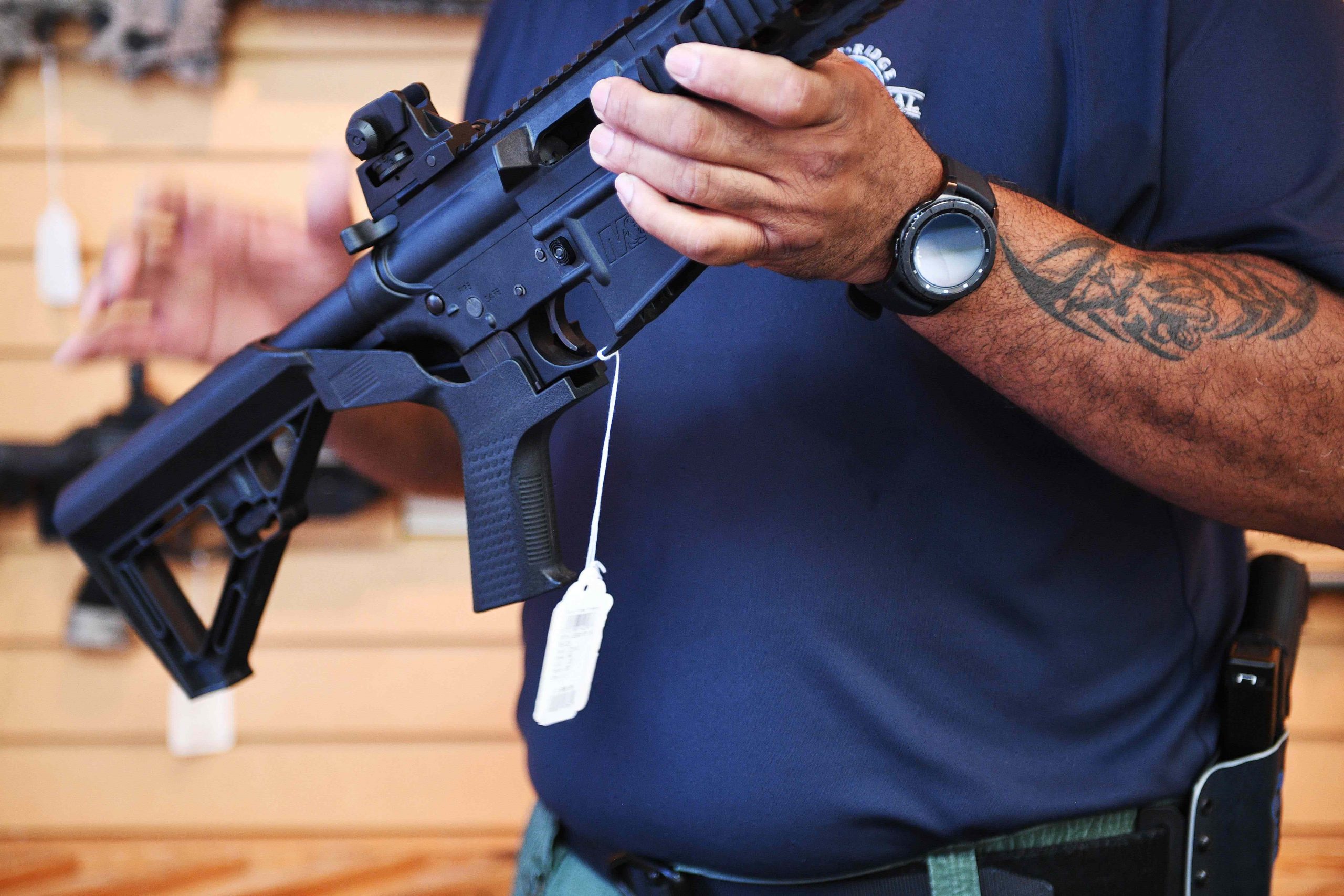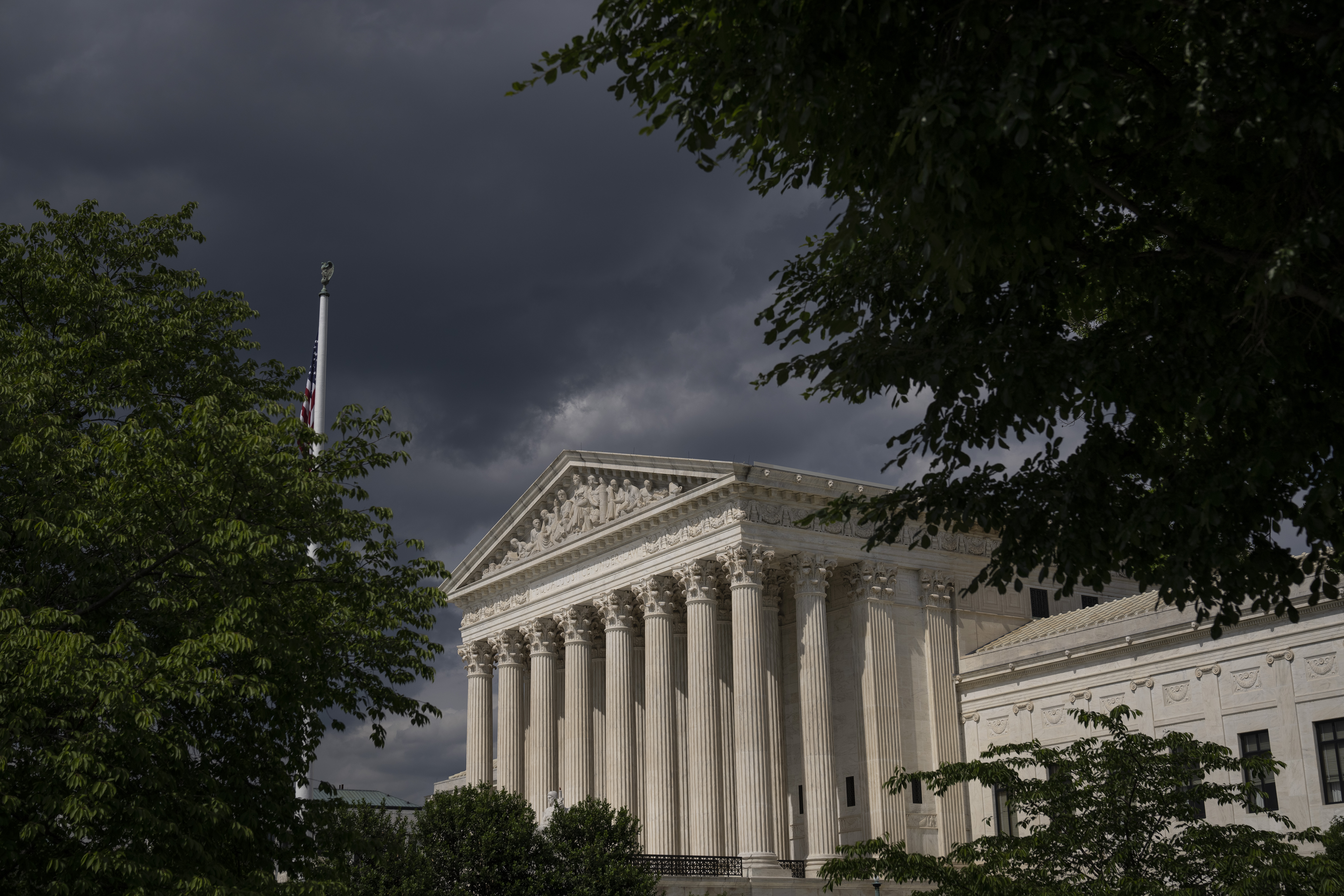Any gun case that reaches the nation’s highest court is bound to drum up widespread attention. But there are a number of smaller-profile lawsuits making their way up the legal ladder that could herald major shifts in U.S. gun policy. These cases touch on a gamut of Second Amendment issues, from bans on large-capacity magazines to age restrictions on handgun buyers.
The number of legal challenges to gun restrictions has been building since 2008, when the Supreme Court’s landmark decision in District of Columbia v. Heller established the right to own a firearm for self-defense. The ruling struck down a Washington, D.C., ban on handgun ownership, but it left the constitutionality of other gun restrictions up in the air, and over the last decade, justices have refrained from issuing any other major rulings to further define the extent of people’s gun rights.
“There’s an enormous amount of uncertainty about what exactly the limits of the Second Amendment are, and that sort of uncertainty generates litigation,” said Timothy Lytton, a professor at Georgia State College of Law and editor of the book Suing the Gun Industry: A Battle at the Crossroads of Gun Control and Mass Torts.
John Donohue, an economist and law professor at Stanford University, said another factor is that gun rights proponents believe they will be more successful in winning favorable court rulings after the ideological makeup of the federal judiciary shifted to the right during former President Donald Trump’s term in office. Trump installed three new conservative Supreme Court justices and more than one-quarter of active appellate court judges.
Trump “greatly expanded the number of judges who have really bought into the notion of an expansive Second Amendment,” Donohue said. “Everybody in the gun lobby thinks now is their time, and they want to get these cases before the courts.”
Much attention has focused, lately, on the first Second Amendment case the Supreme Court is set to hear in more than a decade: a challenge to New York’s restrictions on carrying concealed firearms in public, which is set for oral argument this fall and could reverberate across the country.
But The Trace has compiled a list of other cases that legal experts say could leave a lasting imprint on Second Amendment jurisprudence. The list is not exhaustive, and it’s important to note that with many of the rulings discussed below, other courts have reached different conclusions, leaving the constitutionality of gun restrictions in question.
Gun Owners of America v. Garland
In 2017, a man used guns equipped with bump stocks to kill at least 60 concertgoers on the Las Vegas Strip. The shooting prompted the Trump administration to ban the attachments, which allow semiautomatic rifles to be fired at a faster rate, turning them into de facto machine guns. To do this, the Bureau of Alcohol, Tobacco, Firearms and Explosives reclassified bump stocks as machine guns, which have been barred from civilian production since 1986, and mandated that owners destroy their bump stocks or turn them over to authorities. Anyone found to be in possession of the devices past the date of the ban was in violation of the law.
The regulation triggered a flurry of lawsuits. One is Gun Owners of America v. Garland, in which gun rights groups and firearm owners argue that the ATF overstepped its bounds. A federal district court judge refused to stop the bump stock ban from taking effect in March 2019, but his ruling was overturned by a three-judge panel from the 6th Circuit Court of Appeals in Ohio. The panel’s decision was split 2-to-1 — with the majority finding that the ATF had misinterpreted federal gun statutes in classifying bump stocks as machine guns — and it marked a significant break from other appellate courts that have upheld the ban. The full 6th Circuit is now slated to hear the case.
Hirschfeld v. ATF
Federal law prohibits licensed gun dealers from selling handguns to anyone under the age of 21. That was a problem for Natalia Marshall, an 18-year-old equestrian assistant trainer in rural Albemarle County, Virginia, who wanted a gun after obtaining a protective order against an abusive ex-boyfriend.
Marshall was turned away when she attempted to purchase a handgun from Dick’s Sporting Goods in 2018. She decided to sue the ATF, contending the federal age restrictions were unconstitutional. District Court Judge Glen Conrad, a George W. Bush appointee, dismissed the complaint, but his ruling was reversed by the 4th Circuit Court of Appeals in Richmond, where a divided three-judge panel concluded that the law had relegated 18-to-20-year-olds “to a second-class status.”
The 4th Circuit’s ruling stands in contrast to a previous decision by a federal appeals court in New Orleans that upheld the age restriction. The full 4th Circuit is expected to rehear the Hirschfeld case, and the losing side will likely appeal. Legal experts say the divergent rulings at the appellate level increase the likelihood of a Supreme Court review, jeopardizing a restriction that’s been on the books for more than 50 years.
Hirschfeld is not the only recent case dealing with prohibitions on gun ownership among specific groups of people. The Supreme Court in April declined to review a lawsuit by a Washington State resident who was unable to buy a gun because he had been involuntarily committed for mental health treatment when he was 17 years old. More recently, a federal appeals court in New York upheld a ban on gun possession for undocumented immigrants.
Update, September 22: The 4th Circuit vacated its previous decision because Marshall, the plaintiff, turned 21.
Duncan v. Bonta
At least nine states and the District of Columbia have placed limits on the capacity of ammunition magazines, reasoning that when criminals can fire more shots without having to reload, casualties are higher.
After California outlawed magazines capable of holding more than 10 rounds in 2016, the California Rifle & Pistol Association and several gun owners sued. In Duncan v. Bonta, they argue that the state’s prohibition on larger capacity magazines is a violation of the Second Amendment as well as the Constitution’s takings clause, which restricts the government from seizing people’s property without justly compensating them. (The ban gave owners of high-capacity magazines 90 days to surrender or sell them before being subject to prosecution.)
Judges have twice sided with the plaintiffs, but those rulings could be reversed by the 9th Circuit Court of Appeals, where an 11-member panel is reconsidering the case. Its decision is likely to influence the outcome of two other cases in California challenging the state’s ban on assault weapons.
Donohue, the Stanford professor, said that while courts in other parts of the country have upheld banning assault weapons and limiting magazine capacities, a ruling against California’s laws would bolster plaintiffs seeking to overturn similar statutes in other states.
“Right now, there are splits on a number of these issues,” Donohue said. “At some point, I think the Supreme Court will step in and decide. But for the time being, it’s a divided country in terms of what is permissible.”
Smith & Wesson v. Bruck
For decades, cities and victims of gun violence have used the legal system to try to gain access to the internal records of gun companies, believing they will shed light on their conduct and force the industry to reform. But those efforts have long been stymied by a 2005 federal law that shields gun manufacturers from most lawsuits.
New Jersey Governor Phil Murphy’s administration attempted to bypass that hurdle in October by subpoenaing Smith & Wesson for internal documents as part of a state investigation into advertising fraud, a crime for which the gun industry’s special legal protections do not apply.
In Smith & Wesson v. Bruck, the company contends that the subpoena should be quashed, denouncing it as a “shadow pressure campaign.” District Court Judge Julien Xavier Neals, a recent Biden appointee, disagreed, and he dismissed the suit in August. Smith & Wesson has appealed that ruling.
There are other cases that may also yield internal gun industry documents. One is a lawsuit against Remington brought by families of victims of the 2012 Sandy Hook Elementary School shooting in Newtown, Connecticut. Another was filed by the city of Gary, Indiana, against a number of gunmakers, including Smith & Wesson; a judge is set to decide in September whether those defendants would have to turn over 25 years’ worth of records.
Lytton, the Georgia State professor, says New Jersey’s investigation into Smith & Wesson harks back to the ‘70s and ‘80s, when litigation against cigarette makers prompted state attorneys general to begin probing the tobacco industry. But whereas the tobacco cases netted major reforms, Lytton said there’s no telling if investigations of gun companies will achieve the same result.
“With pretty much any other type of product, when there’s massive casualties or losses of life, there’s usually a shakeup or things move … That has not been true with firearms,” Lytton said. “There’s something sui generis about firearms in America.”
Additional reporting by Will Van Sant.
Correction: A previous version of this article used the outdated title for the legal dispute between Smith & Wesson and New Jersey. Since the state’s acting attorney general, Andrew Bruck, was appointed in July 2021, the case is now known as Smith & Wesson v. Bruck, not Smith & Wesson v. Grewal.


